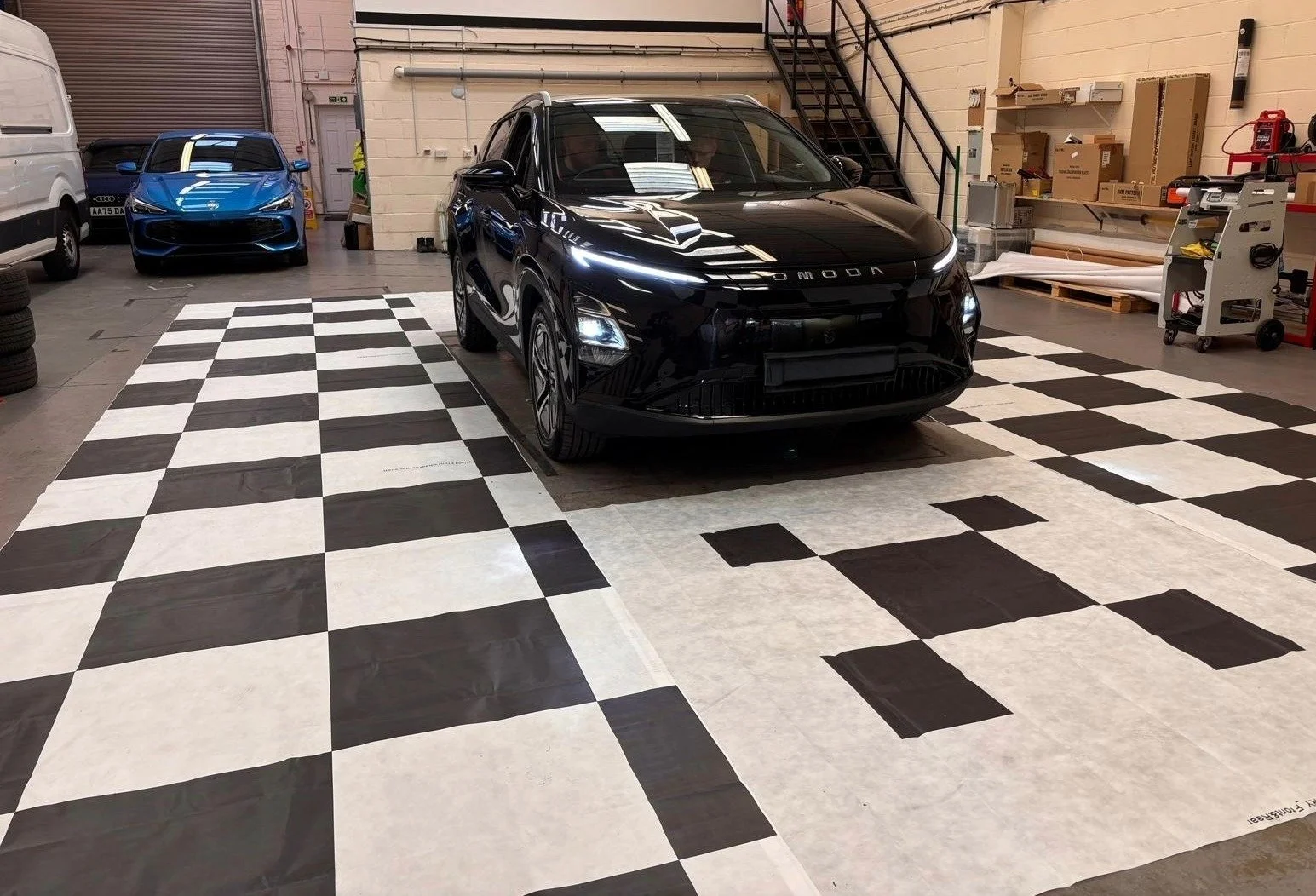A1 ADAS Flags Unsafe ‘Car Park’ 360° Calibrations as Demand Surges
A1 ADAS Group has reported a sharp surge in demand for 360-degree surround-view camera calibrations, with its Norwich HQ now receiving daily deliveries of vehicles from main dealers, bodyshops, and repairers across the UK.
The site houses one of the country’s largest dedicated ADAS workshop spaces and is increasingly being relied upon by repairers that lack the physical footprint required to carry out surround-view camera calibrations.
Demand is being driven by the rapid uptake of vehicles fitted with these 360-degree camera systems across brands such as BYD, MG, Omoda, Jaecoo, and Nissan. In September alone, BYD registered 11,271 cars in the UK – an almost tenfold increase year on year – taking a 3.6% market share and making the UK its largest market outside China.
Calibrating 360 surround-view cameras to OEM standards requires a level workshop with controlled lighting and enough space for precise mat placement. The area needed varies greatly between makes and models. A Nissan Leaf typically requires a clear working area of 24m², and this increases to nearly 100m² for some BYD models.
“Demand at our dedicated ADAS centre has risen sharply,” said Iain Molloy, managing director at A1 ADAS Group. “In October, our in-house technicians completed 80 percent more 360 camera calibrations than they did in April. We’re moving quickly to meet demand and have recently appointed another IMI ADAS AOM230 qualified technician to work exclusively on 360 camera calibrations.
“Very few workshops, including those within dealer networks, have a spare 100m² to deal with the calibration requirements of some newer models. They’re sending vehicles hundreds of miles to us because, to be compliant with OEM standards, ADAS calibration must be carried out to the letter.”
The dramatic rise in demand has also led A1 to call out unsafe practices it has witnessed, including attempted 360 camera calibrations in car parks and other unsuitable spaces, the use of unstandardised mats, and jobs signed off without following OEM procedures. In many cases, neither the supply chain nor the customer would know anything was wrong, because there’s a ‘completed’ tick on the diagnostic report.
And for bodyshops especially, A1 says insurer expectations are clear: safety-related calibrations must be fully evidenced before a vehicle is handed back to the customer.
“Our message to the trade is simple,” concluded Molloy. “You hold overall responsibility for the vehicle’s ADAS system when it leaves the workshop, so validate your environment, follow OEM processes, and evidence the result.
“You must be able to do it right – and prove it. If you don’t have the required space and correct environment to meet OEM standards, protect your business and your customers by sending vehicles to a dedicated ADAS centre.”

